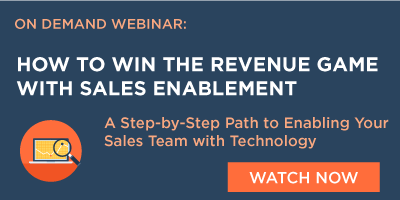 Picture this. You are seven weeks into the quarter and pacing behind last year, and significantly behind your budget. Your manager and your manager’s manager are nosing around to find out what is going on and peppering you with questions about your plan to fix this. Your sales team is growing increasingly frustrated as orders get canceled and prospects fall through. This scenario is hypothetical, of course, but perhaps you have been there. So, how does a sales manager deal with this?
Picture this. You are seven weeks into the quarter and pacing behind last year, and significantly behind your budget. Your manager and your manager’s manager are nosing around to find out what is going on and peppering you with questions about your plan to fix this. Your sales team is growing increasingly frustrated as orders get canceled and prospects fall through. This scenario is hypothetical, of course, but perhaps you have been there. So, how does a sales manager deal with this?
In the scenario described here, there is a chorus of voices reminding you what they want you to do — sell more, deliver budget. But, how to do it falls on you, the sales manager. I have seen responses that range from phone jams, last-minute package offerings, activity mandates, discounts, and even, a hyper-focus on developing target accounts. I am not telling you this list of responses is either good or bad. What I am telling you is the most costly mistake a sales managers can make in a time of crises is to toss their strategy out the window in favor of a tactic they believe will produce revenue now. Big mistake. Sometimes I hear, “Look, Jim, we will get back to our strategic approach as soon as possible, but right now, I just need money on the books!” Getting money on the books is a real need, but how you do it makes a difference. The reality is you don’t have to choose between strategy and tactics.
Keep in mind every tactic you employ either:
- Enhances your strategy
- Ignores your strategy
- Undermines your strategy
We all know the first option is best, so choose a tactic that supports your strategy. For example, instead of getting the sales team to do a last-minute phone jam with a discounted package you might sell once to people you don’t know, do an Idea Jam instead. If you have ten salespeople with eight target accounts each, have each person bring in a list of desired business results their prospect is looking for, and then conduct a five-minute brainstorm for each one. List the hot-water ideas on Post-It flip chart pages, and give them to the salesperson pursuing the prospect. Their call might sound something like this,
Melissa, the last time we talked, you told how important the transition from wholesale to retail customers was for your company. This morning, we had the whole team together to brainstorm a long list of ideas to help you get that done. I’d like to come by, show you the flip chart pages, and get your input about which ones might be useful to you.
If ten salespeople each had eight target accounts, and they knew enough about the desired business results even half of them are seeking, that would offer 40 legitimate new business conversations in a short period of time. That will produce more near-term revenue than a phone jam with a package, and you are selling something other than a discount, an idea that should result in a sale and a renewal.
Remember that strategy and tactics are not mutually exclusive. You can have both and get the result you are looking for. Does your tactic enhance, ignore, or undermine your strategy? You know what to do.



